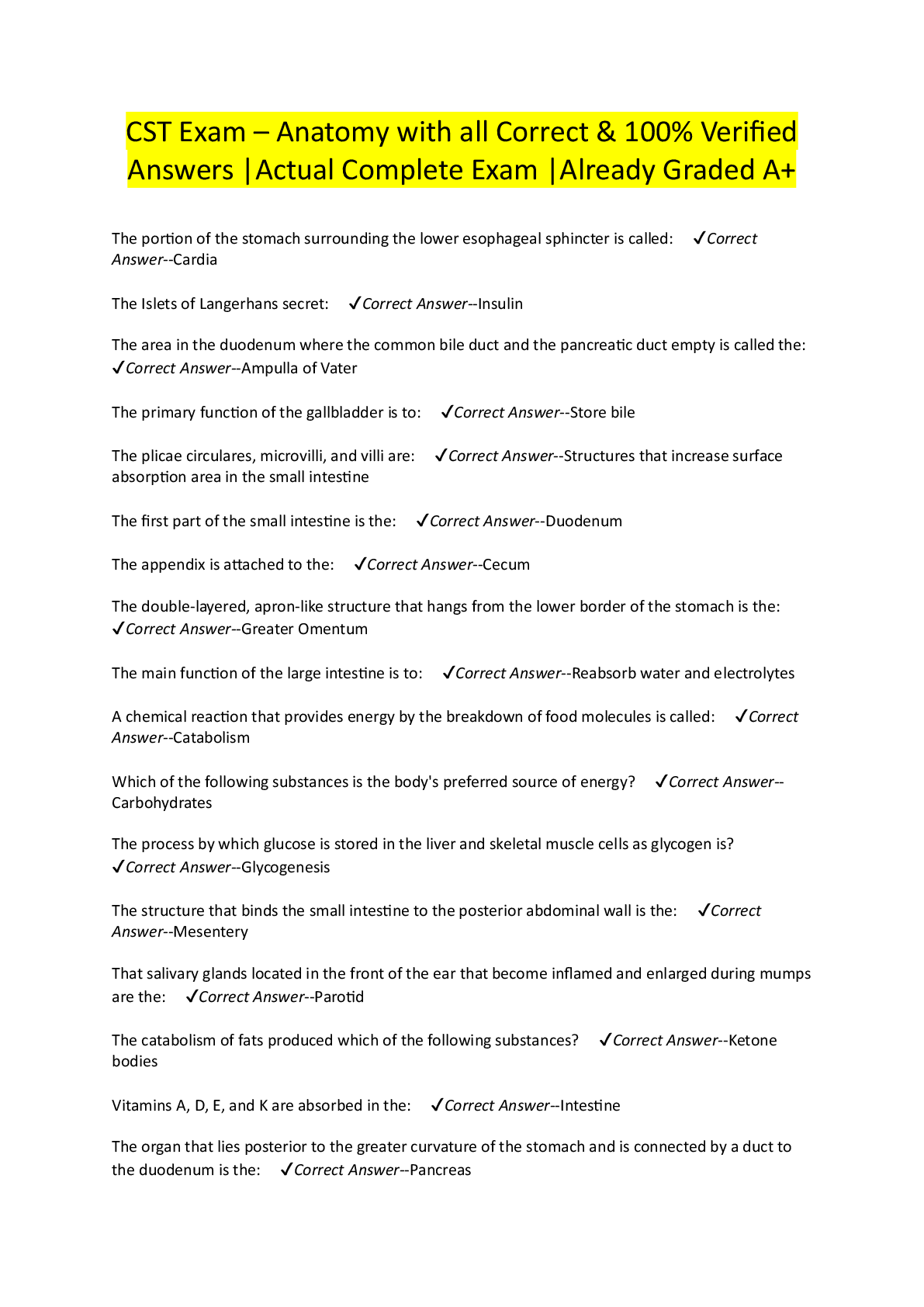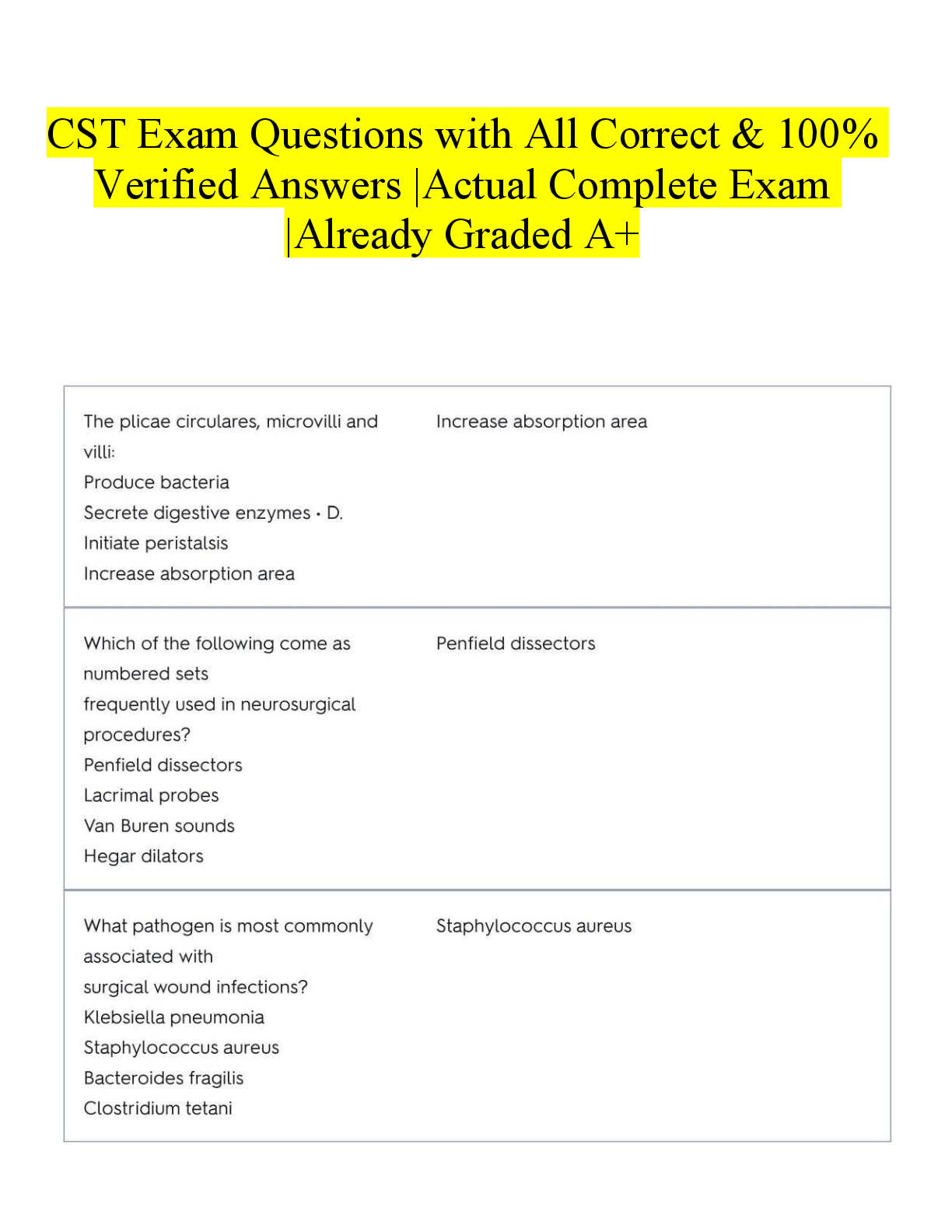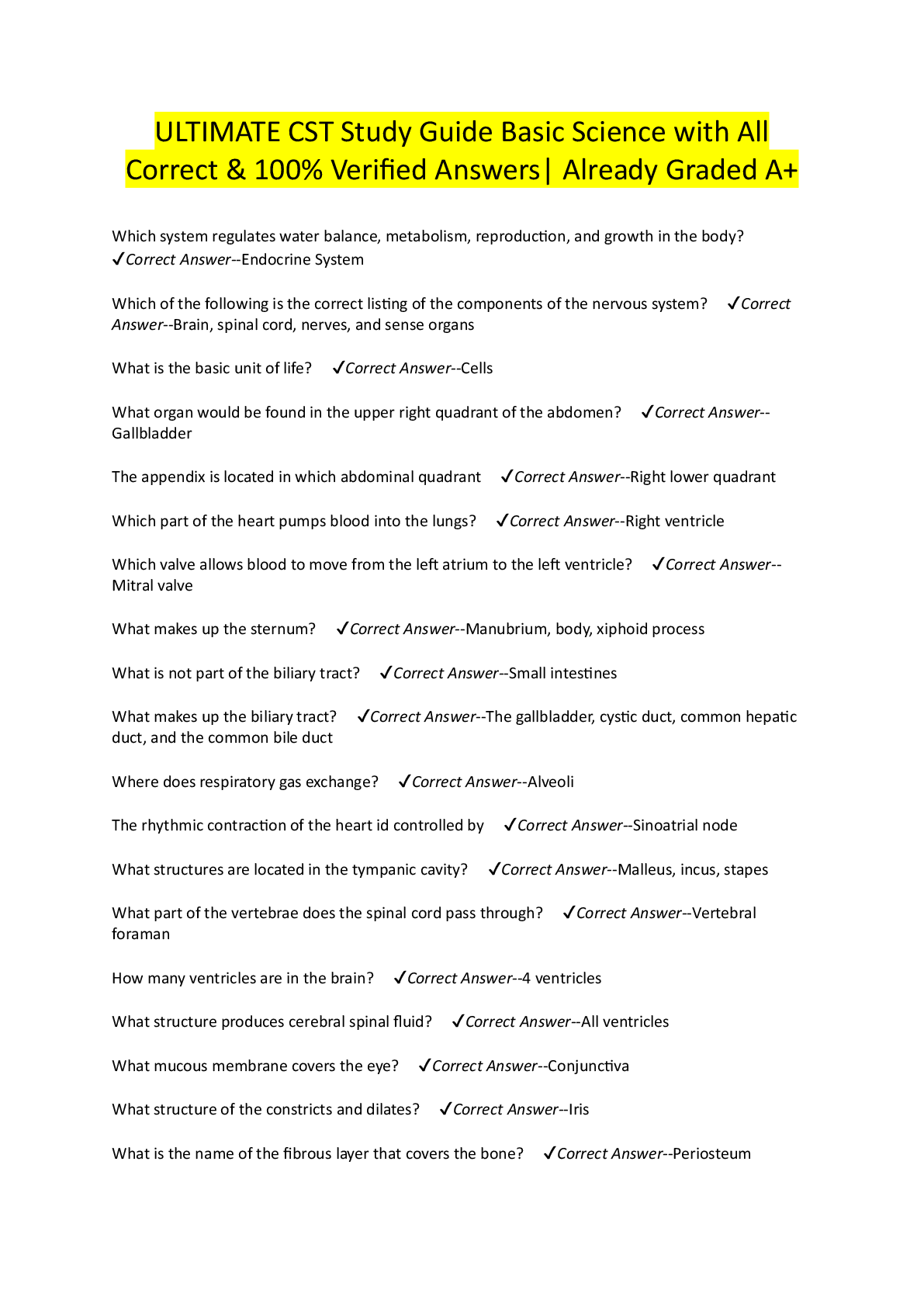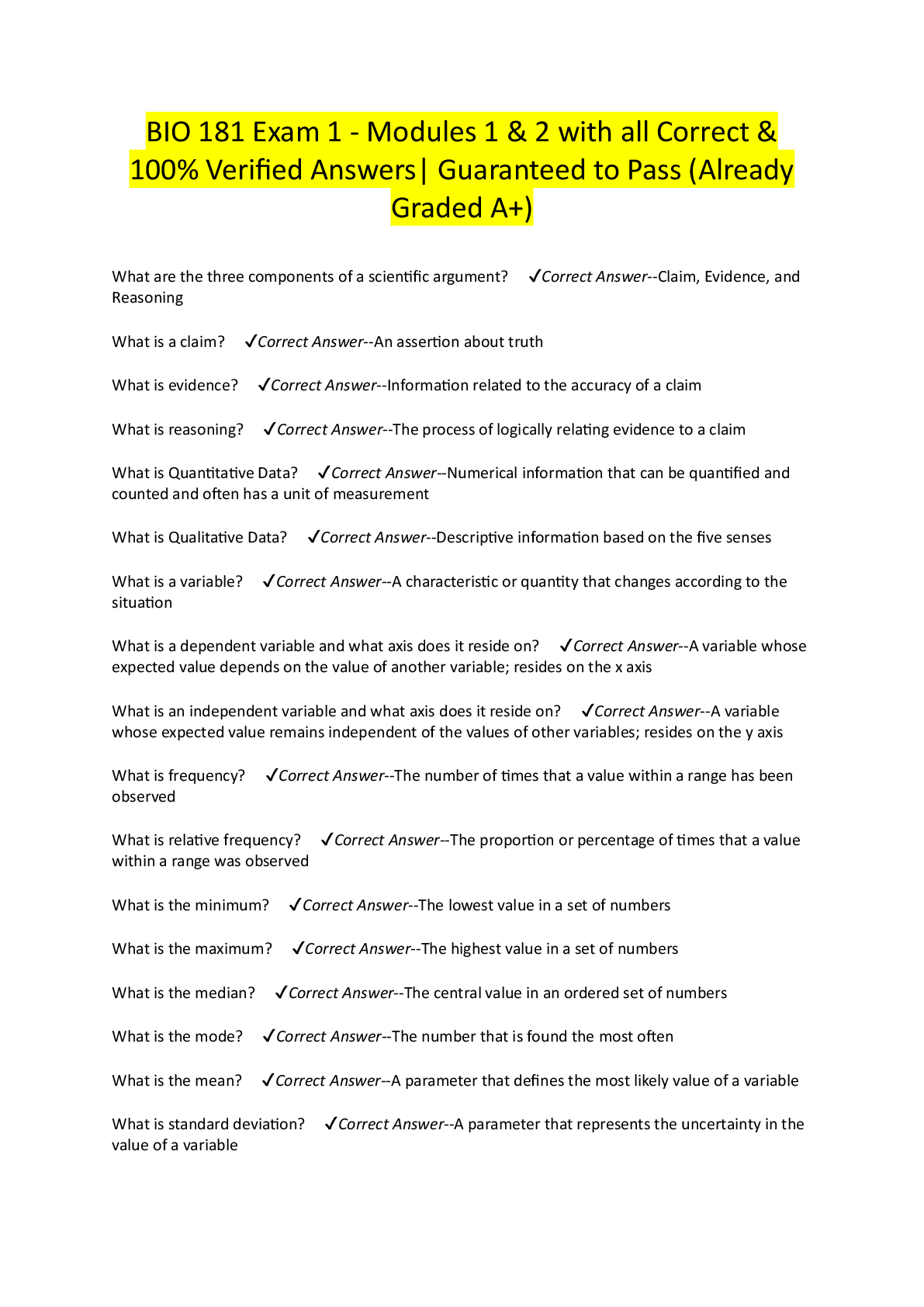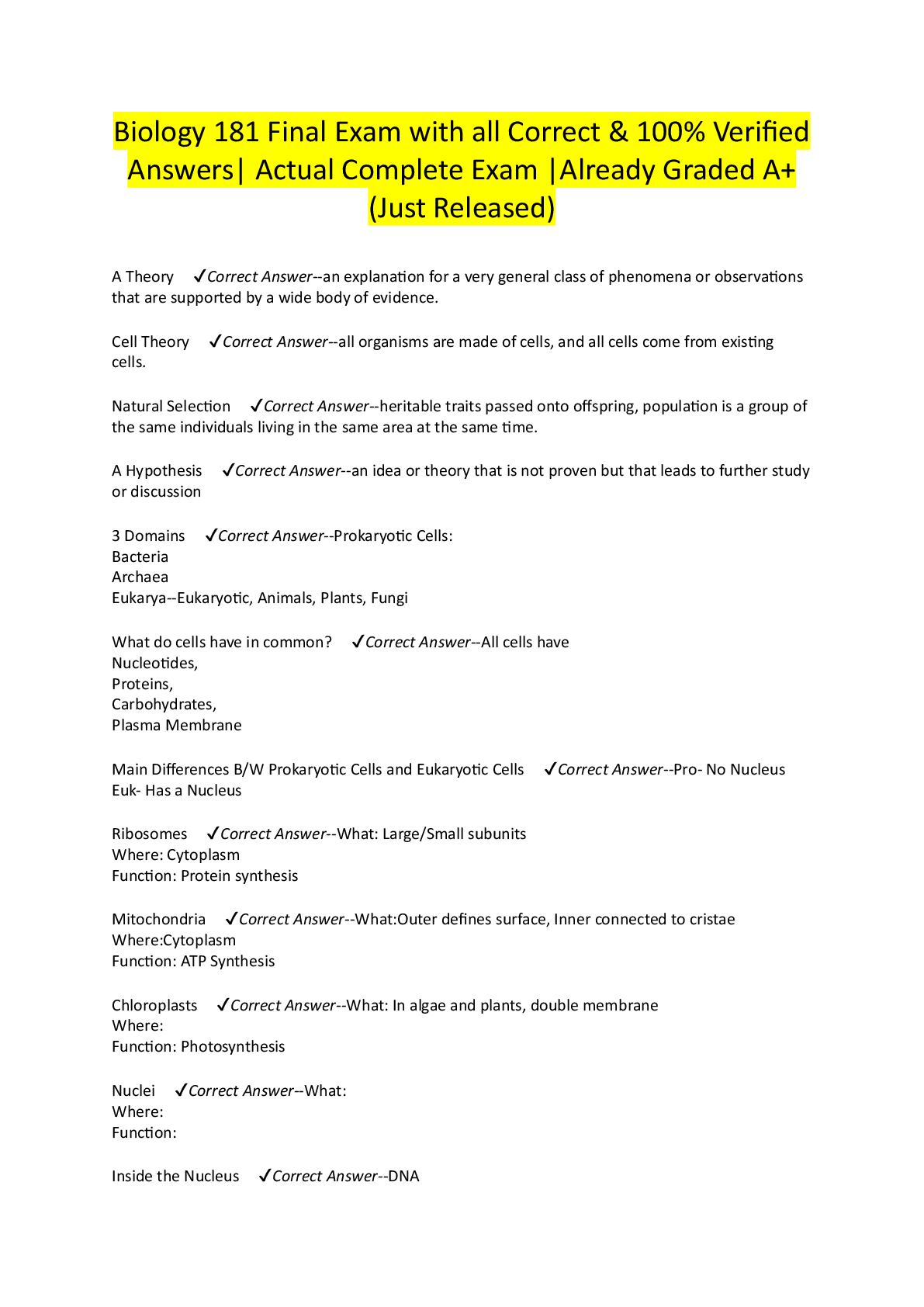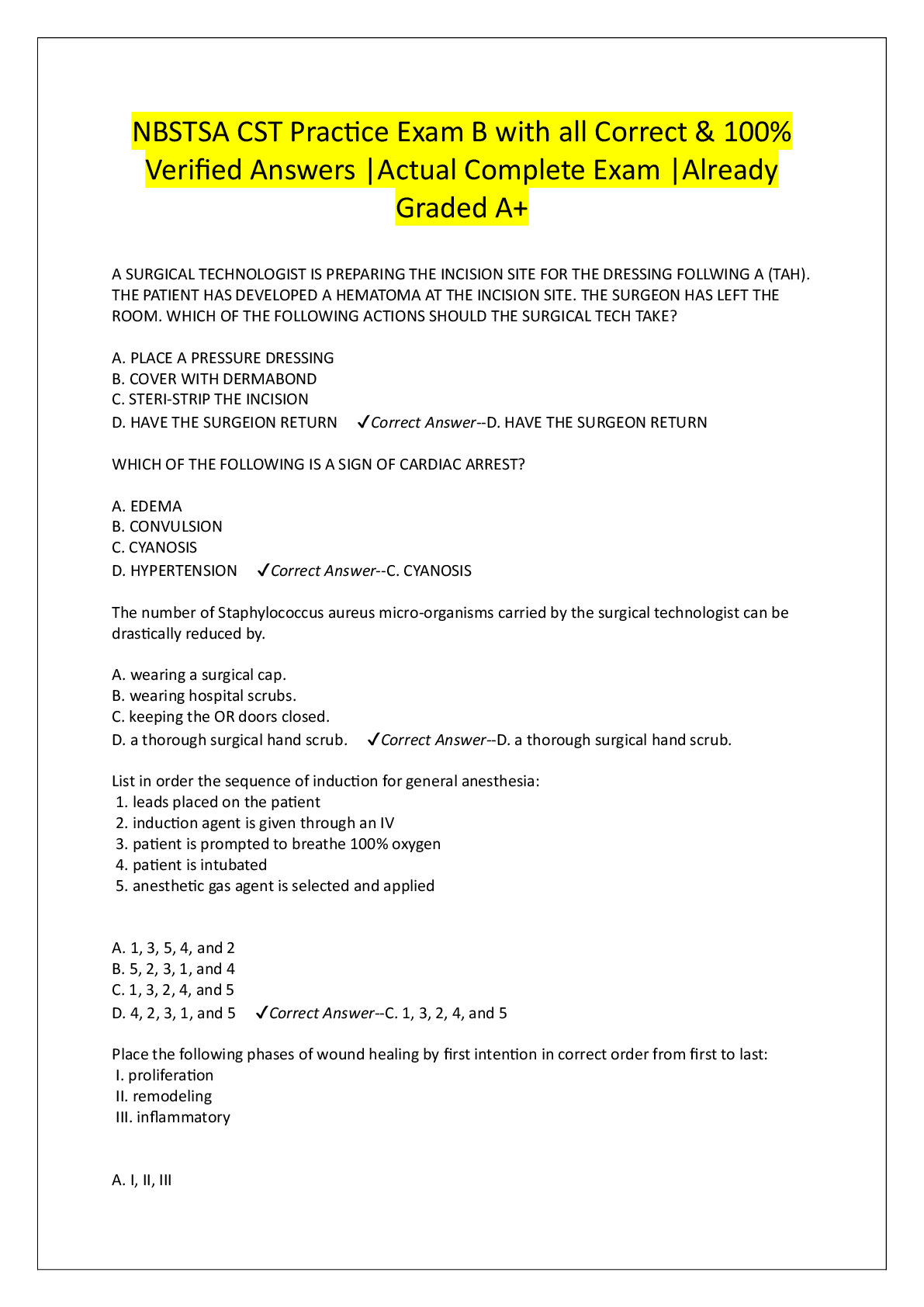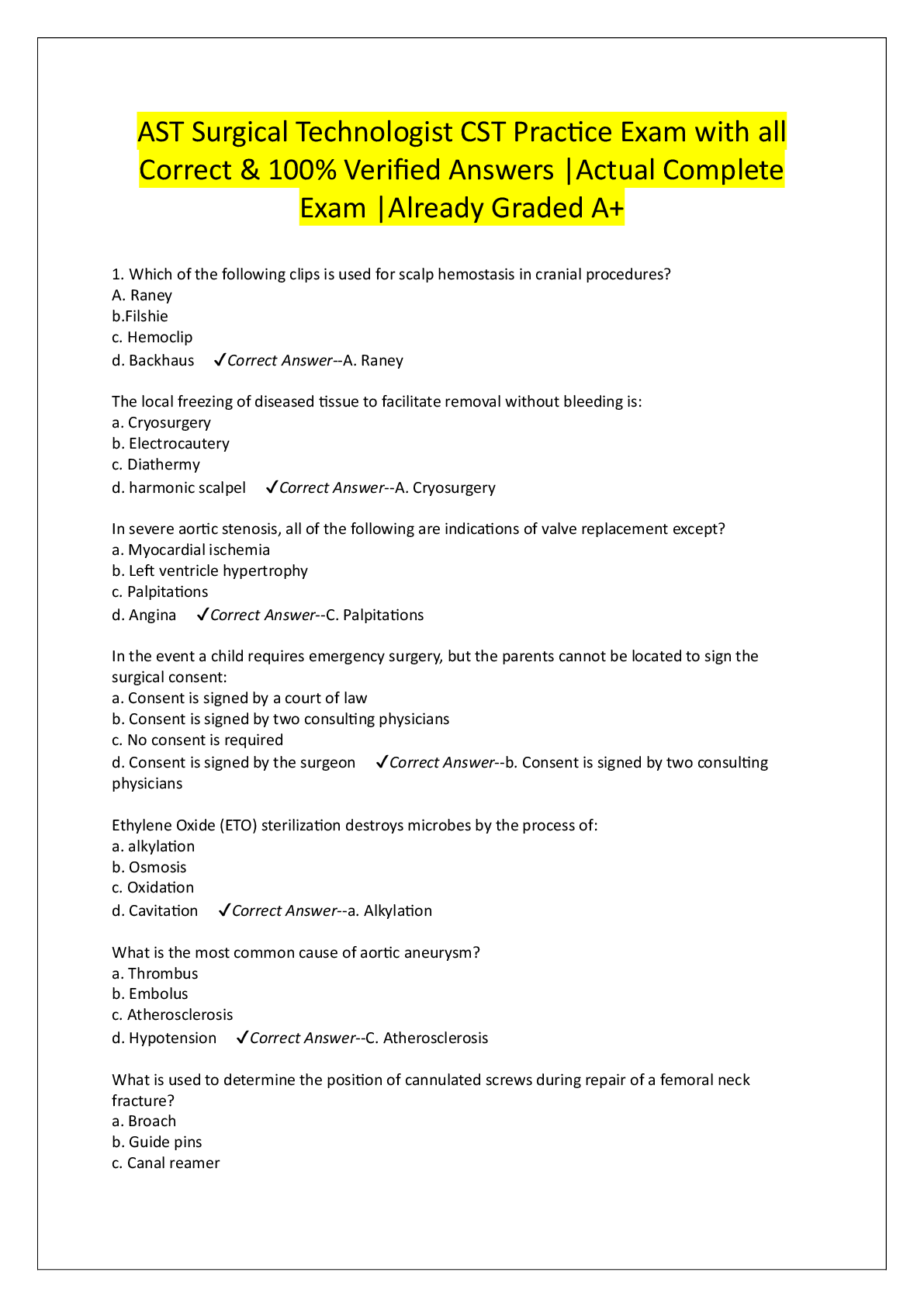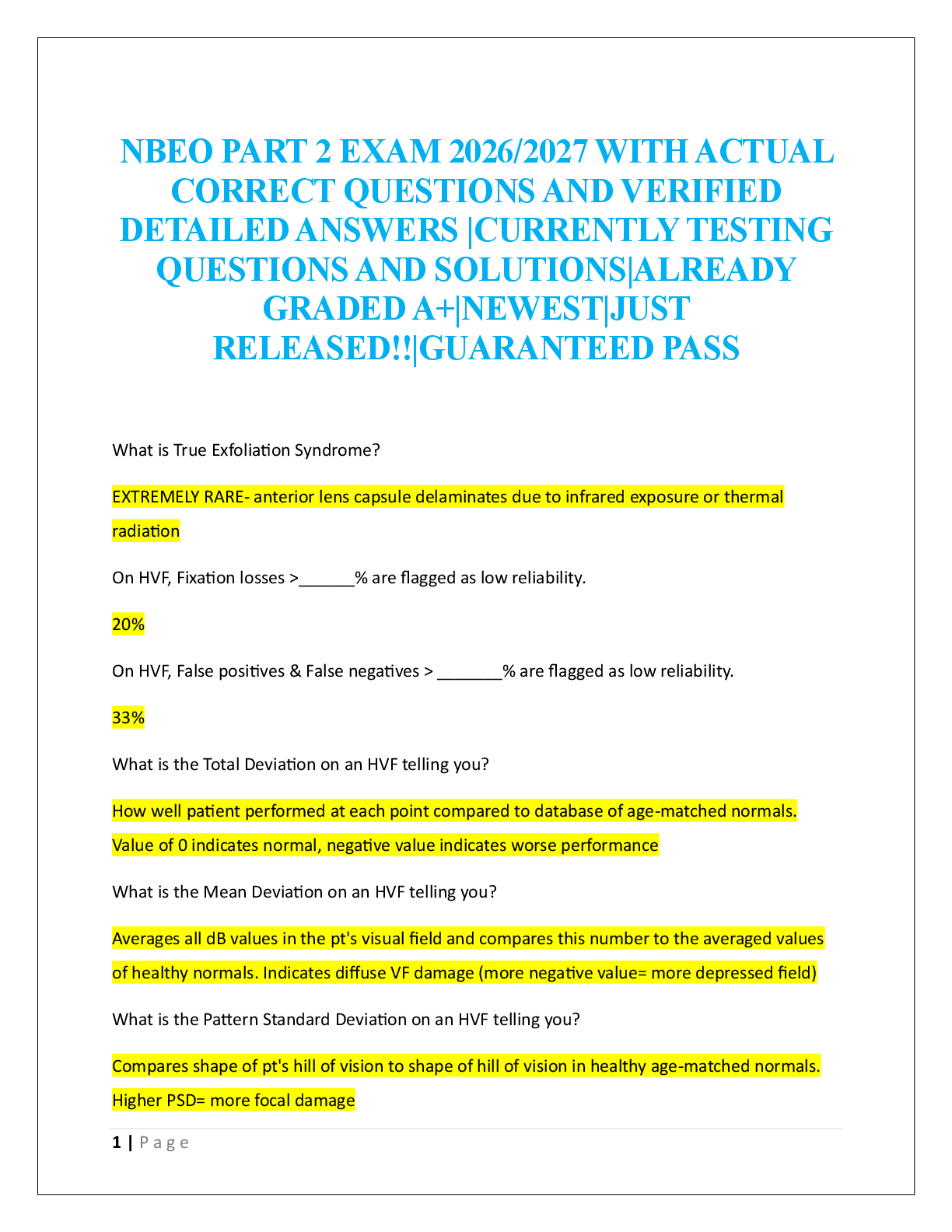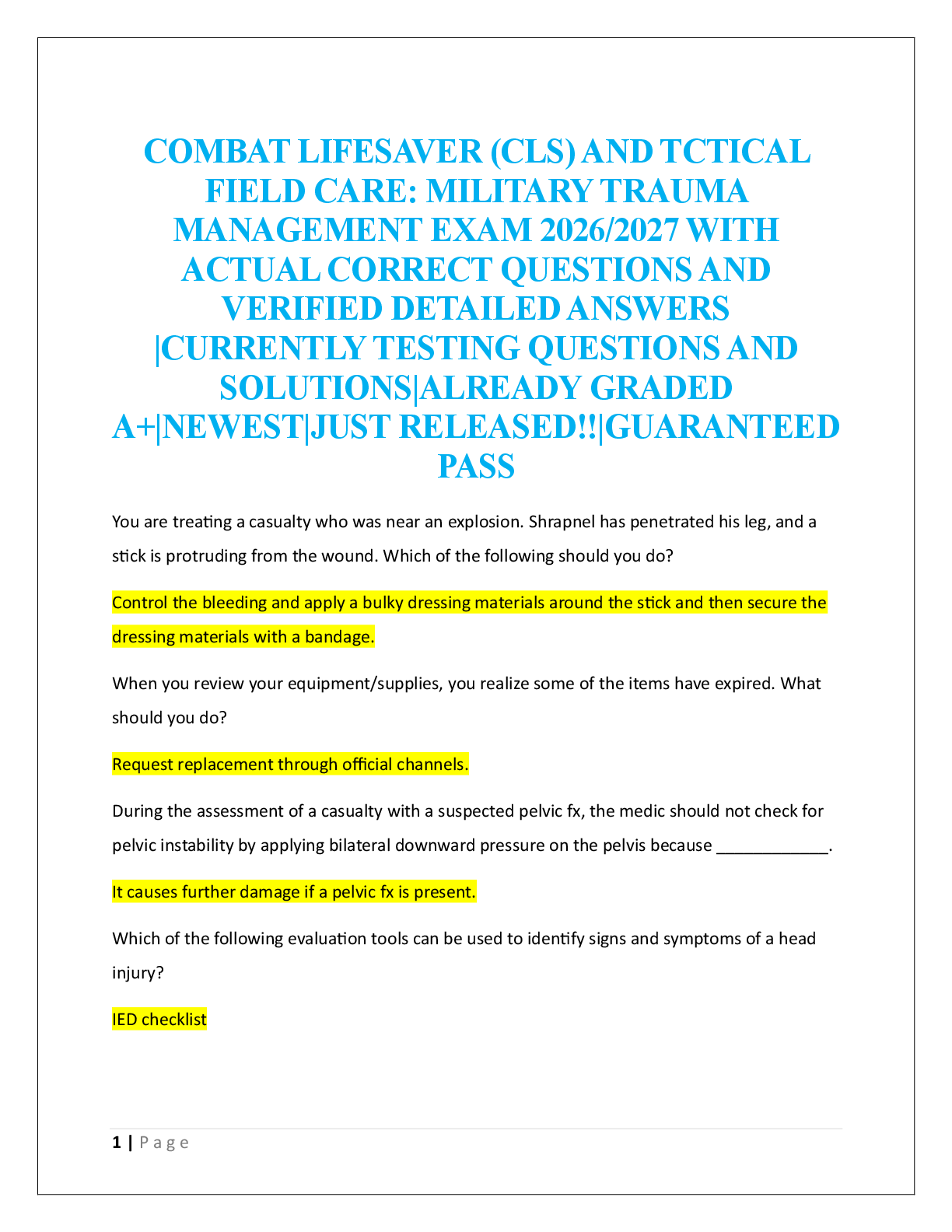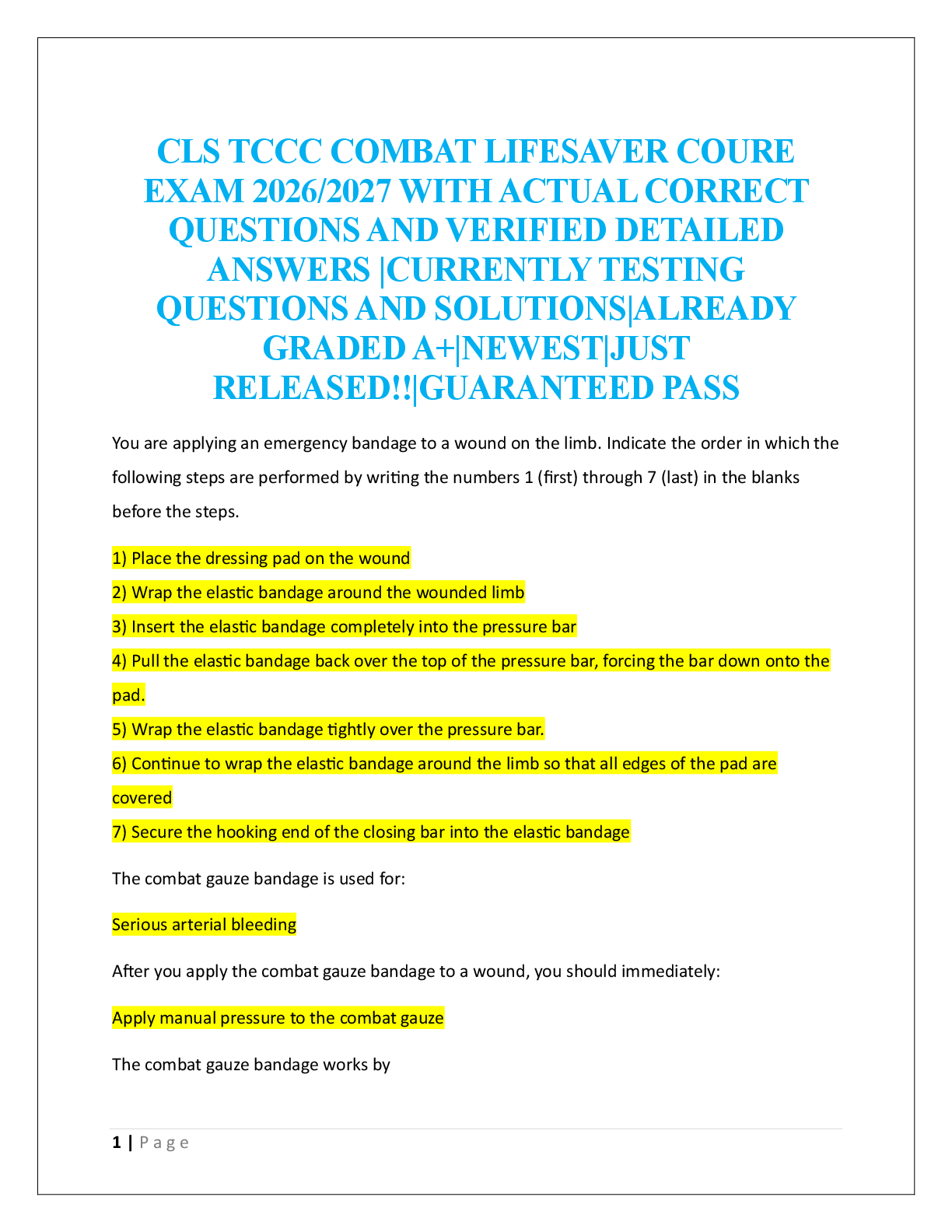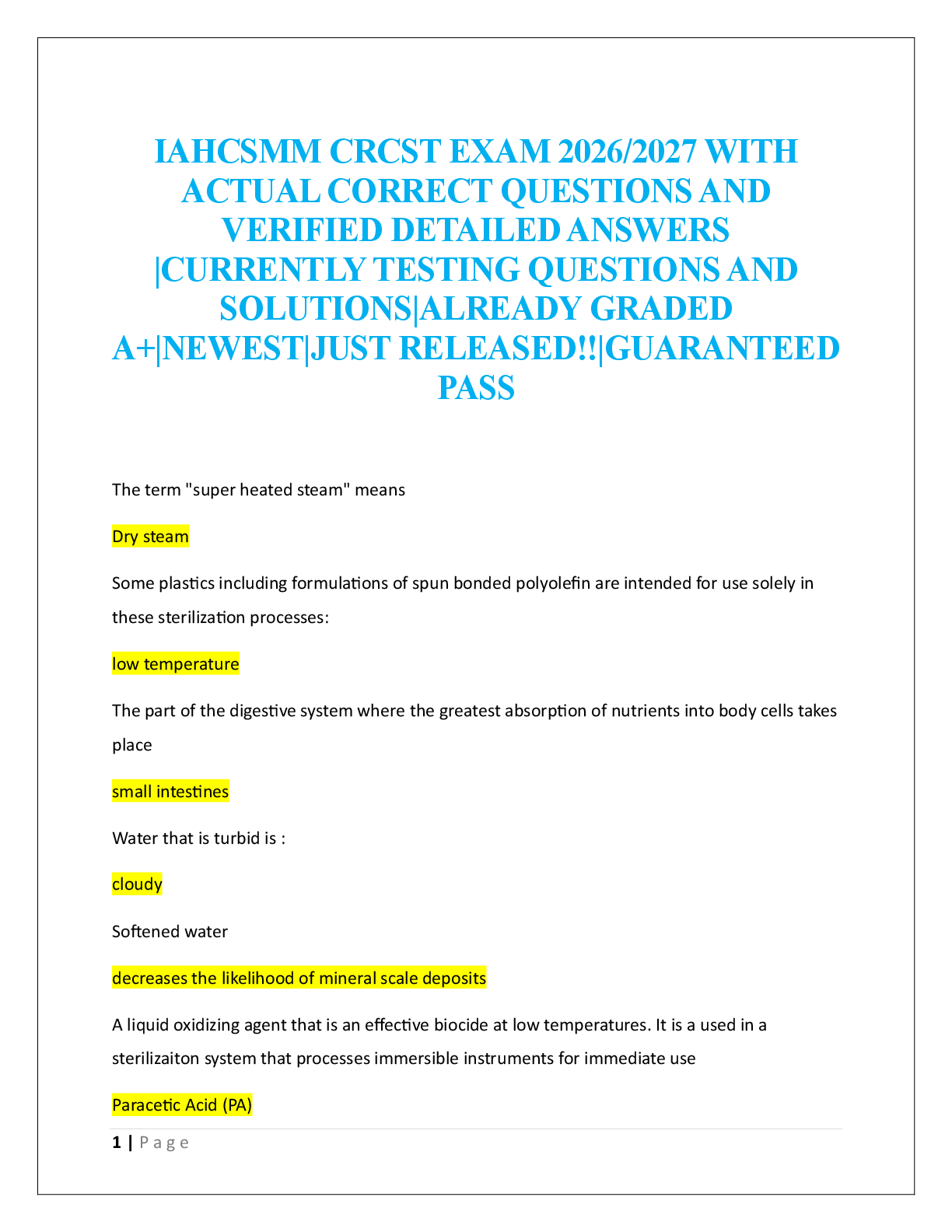Pathophysiology > EXAM > PATHO TEST BANK UNIT 1 PRACTICE EXAMS, QUESTIONS AND ANSWERS. ALL 100% CORRECT (All)
PATHO TEST BANK UNIT 1 PRACTICE EXAMS, QUESTIONS AND ANSWERS. ALL 100% CORRECT
Document Content and Description Below
UNIT I PRACTICE EXAMS Chapter 1. Introduction to Pathophysiology 1. Which of the following adaptive changes is considered to be the most dangerous with regard to malignant changes? a. atroph ... y b. dysplasia c. metaplasia d. hypertrophy 2. Which of the following situations is an example of hyperplasia? 1. increase in the size of the heart in a trained athlete 2. thickening o the gallbladder’s walls in response to gallstones 3. development of callus on a laborer’s hands 4. enlargement of the prostate gland with age a. 1,2 b. 1,3 c. 2,4 d. 3,4 3. What is the term that describes failure of cells to develop specialized features? a. dysplasia b. neoplasia c. anaplasia d. hyperplasia 4. Which of the following changes will occur in response to prolonged hypoxia? a. atrophy b. anaplasia c. hyperplasia d. metaplasia 5. In which of the following disorders does liquefactive necrosis occur? a. following a stroke b. heart attack c. gangrene d. tuberculosis 6. Which of the following tissues enlarge by hypertrophy after birth? 1. skeletal muscle 2. bone 3. urinary bladder 4. brain a. 1, 3 b. 1, 2 c. 3, 4 d. 1, 2, 3 7. A disease that indicates a short-term illness that develops very quickly with marked signs is referred to as: a. chronic b. fatal c. acute d. latent [Show More]
Last updated: 3 years ago
Preview 1 out of 9 pages
.png)
Buy this document to get the full access instantly
Instant Download Access after purchase
Buy NowInstant download
We Accept:

Reviews( 0 )
$15.00
Can't find what you want? Try our AI powered Search
Document information
Connected school, study & course
About the document
Uploaded On
Dec 15, 2020
Number of pages
9
Written in
All
Additional information
This document has been written for:
Uploaded
Dec 15, 2020
Downloads
0
Views
178


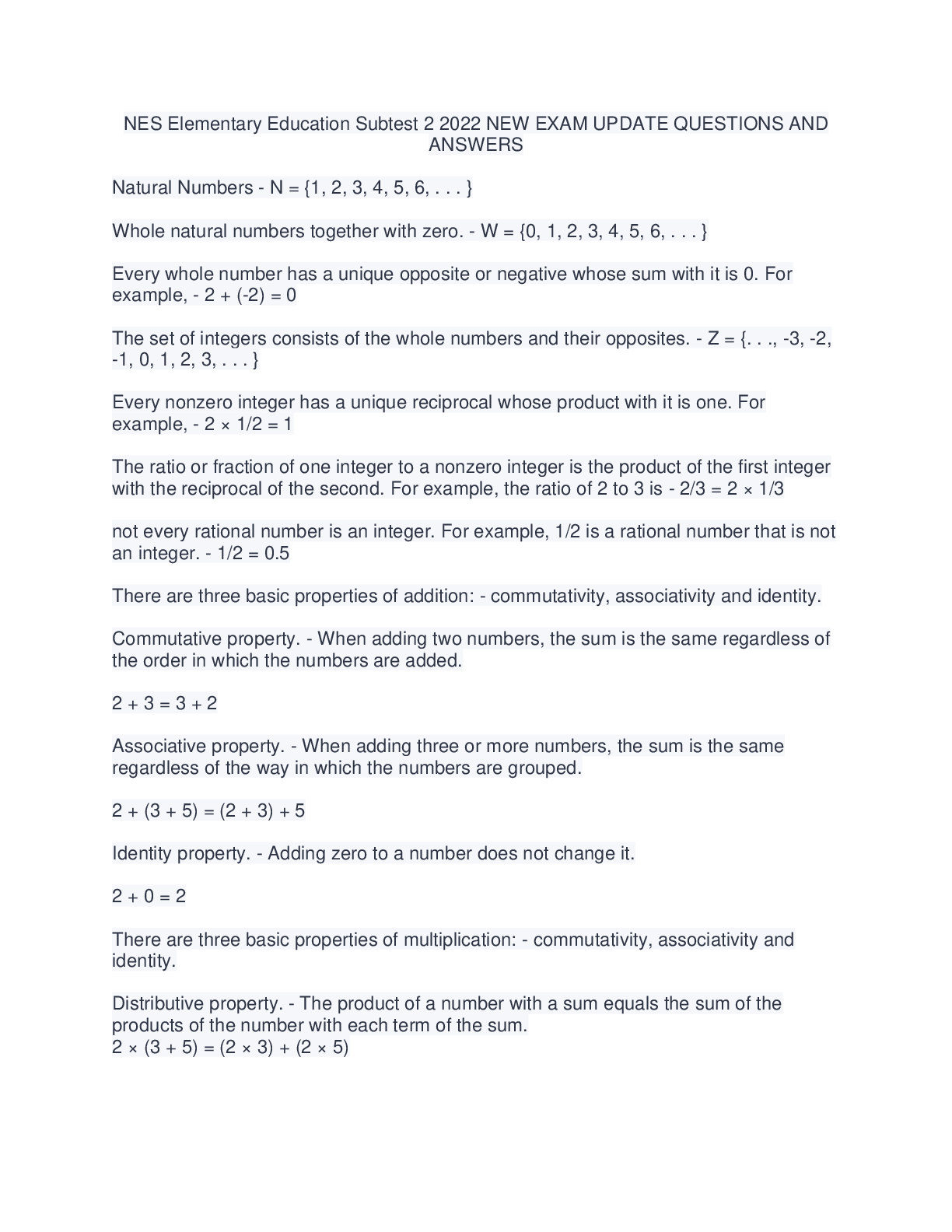
.png)



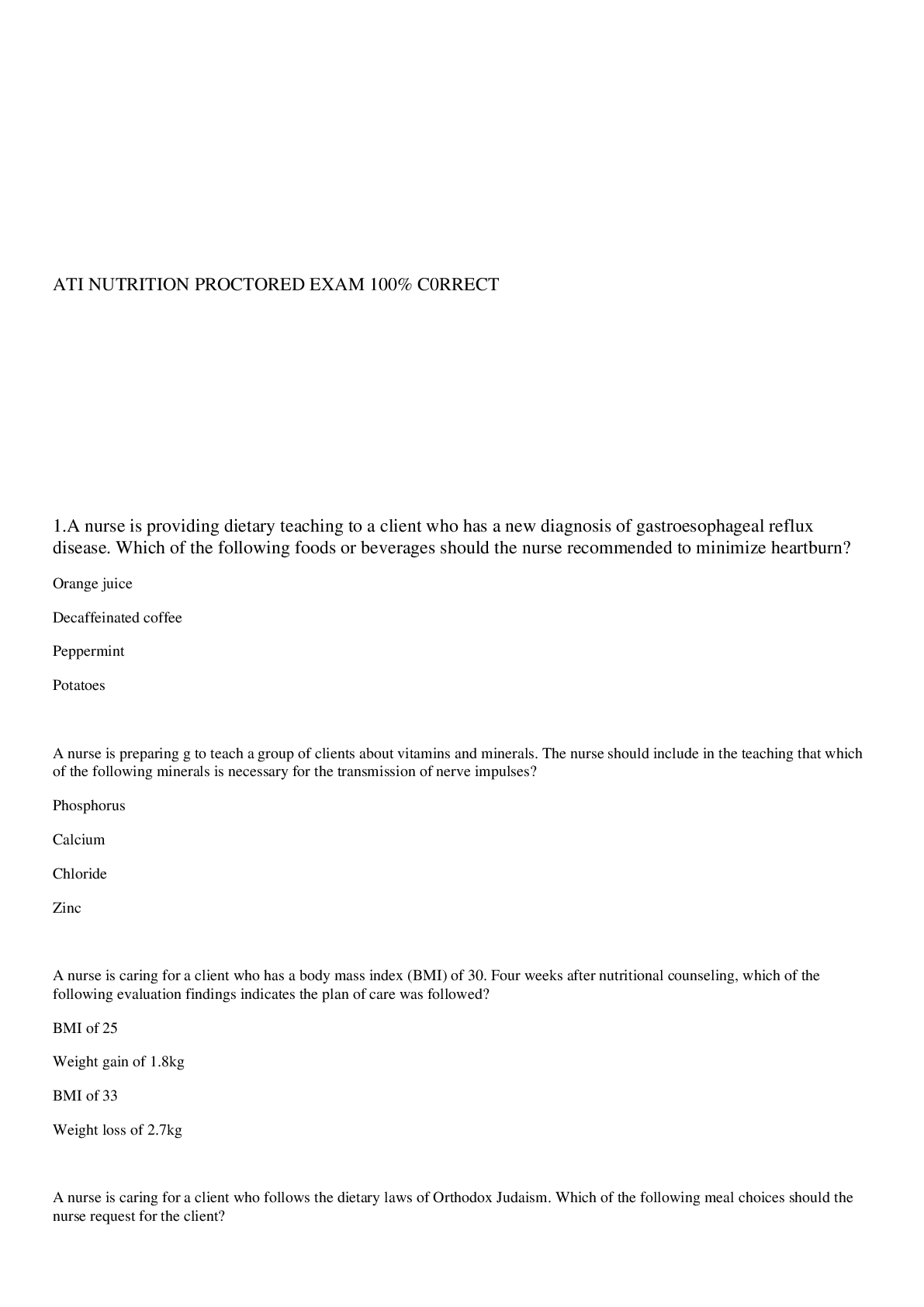
.png)
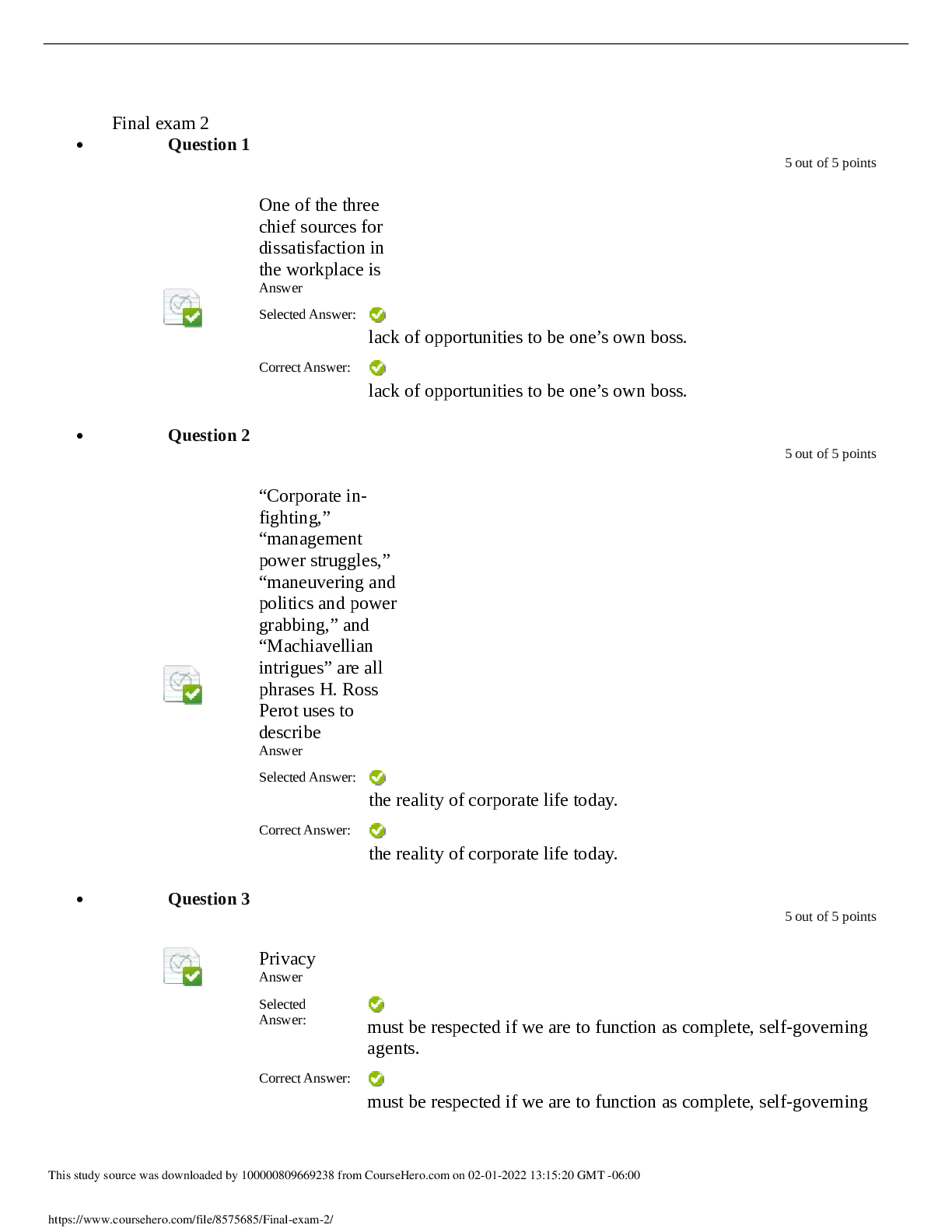
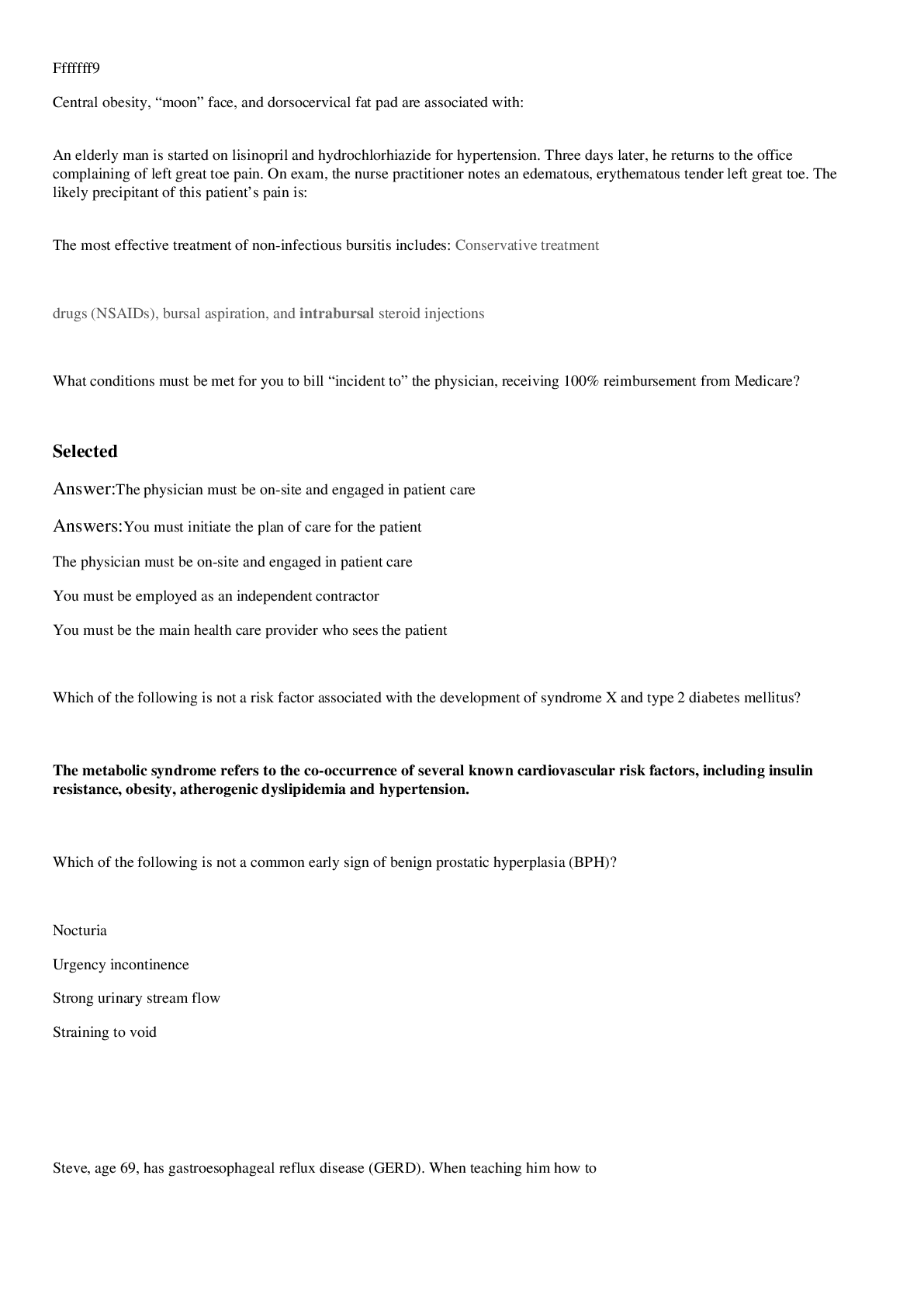
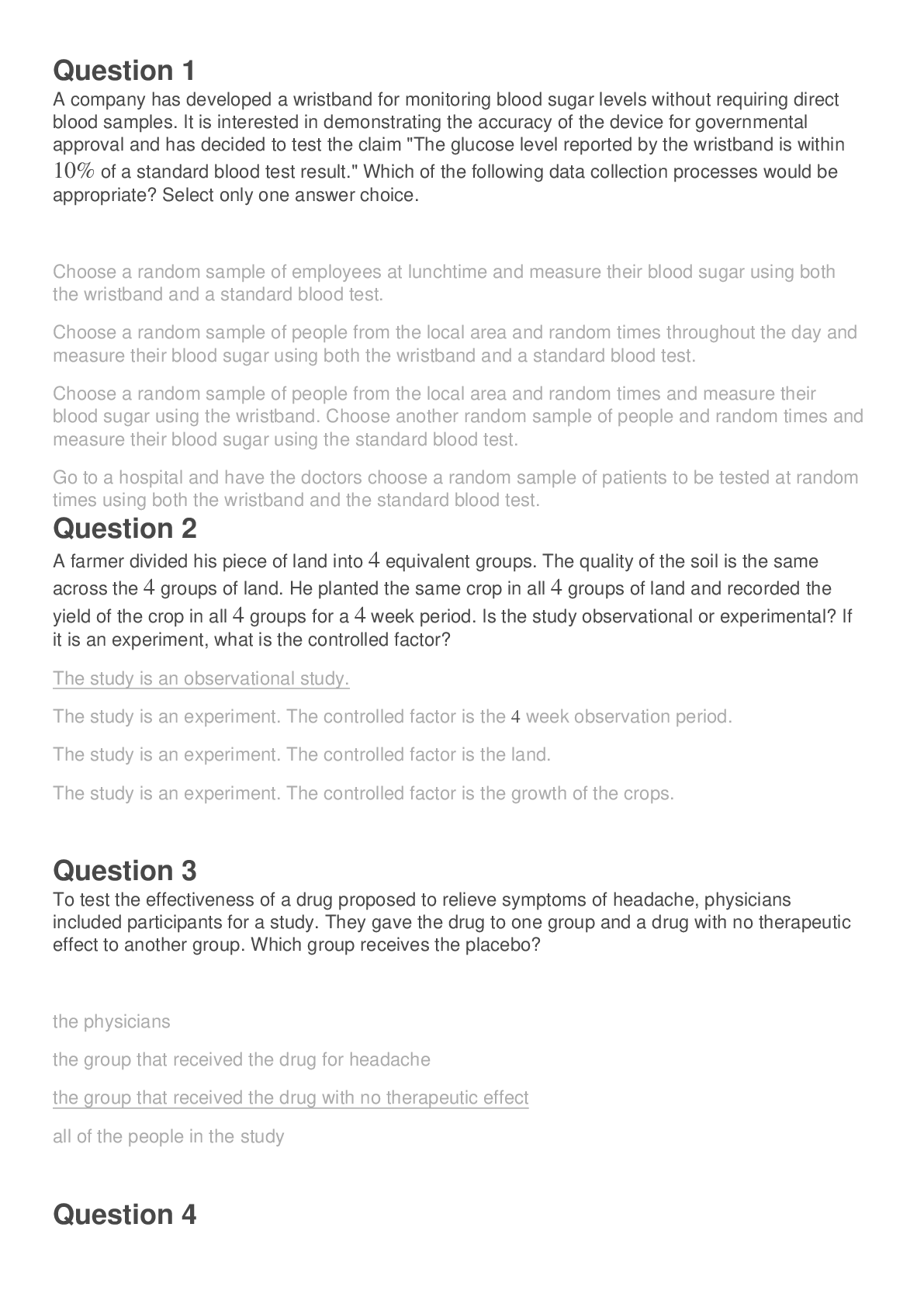
.png)
